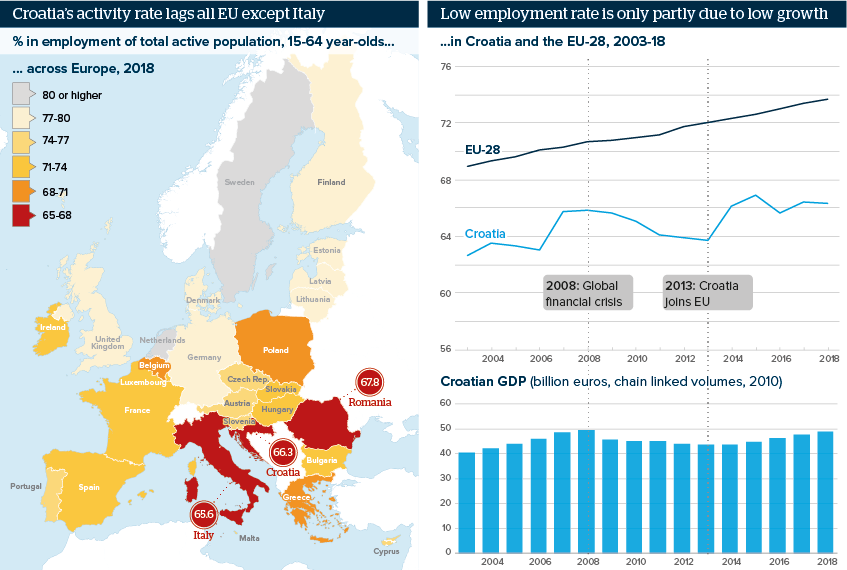Low participation rate points up Croatia’s slow reform
Croatia’s low labour force participation rates stem from a relatively unreformed economy with a large informal sector
Source: Eurostat; Croatian Bureau for Statistics
Outlook
Croatia’s labour force participation rate has failed to close the gap with the rest of the EU. There is a correlation with Croatia’s generally sluggish economic performance (which has encouraged emigration). That Slovenia has had a consistently higher rate suggests it is not due to the Yugoslav legacy.
Part of the explanation probably lies with country-specific factors: Croatia’s slow transition, labour market rigidities, poor business climate, inflows of remittances from workers abroad and the opportunities for unofficial employment in the large informal economy. The current government is slow to tackle these issues.
Impacts
- Low employment levels disproportionately affect 15-24 year-olds.
- Education reforms, including life-long learning, would equip the workforce better for the workplace.
- Recent pension reforms will tackle widespread early retirement and encourage more older people to remain economically active.
